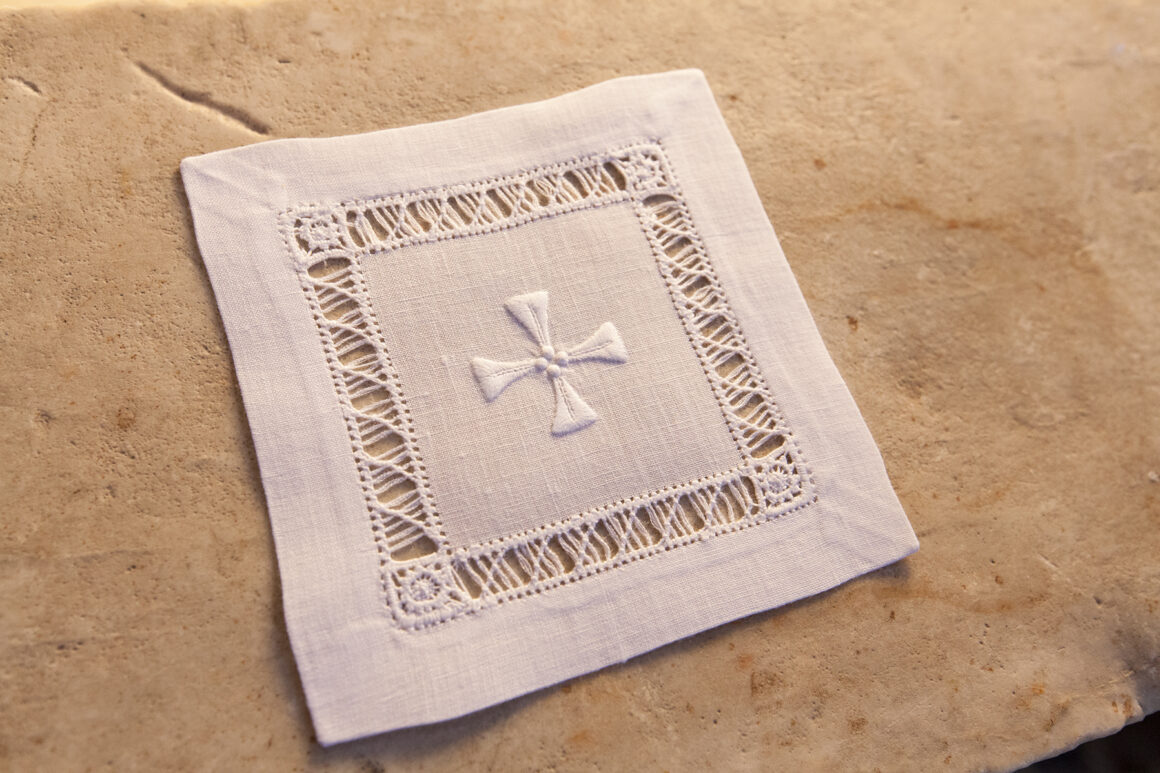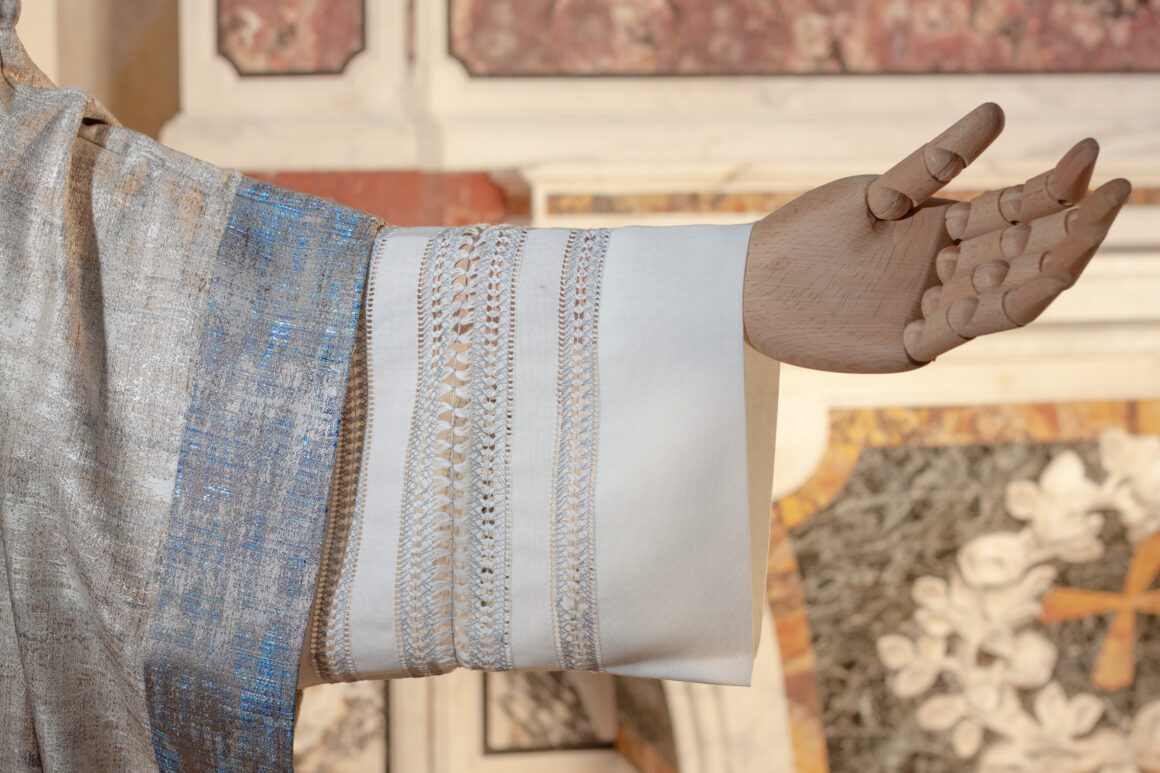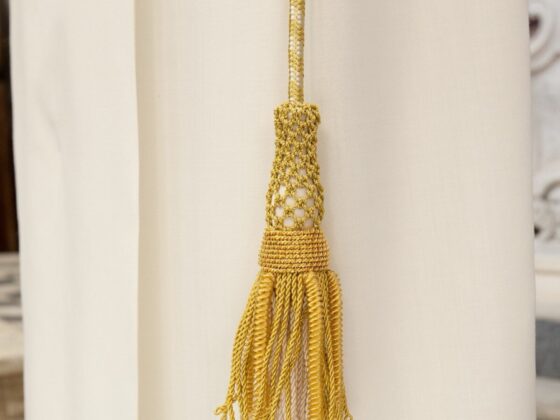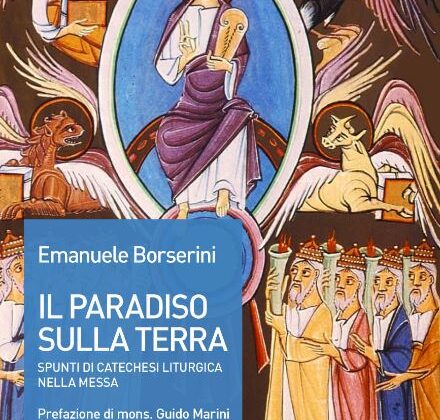It’s in our name, it’s in our history: hand embroidery has been a part of our company for over 90 years and defines all our products. We use many embroidery techniques to decorate our creations. Sfilatura (drawn thread work) is one of them.

What is drawn thread work?
Drawn thread work is a type of counted-thread embroidery created by removing threads from the fabric’s weft or warp. The embroidery is worked directly on the fabric without any preliminary designs. Once the threads are removed, the remaining threads are tied together in a variety of patterns and designs. This is a form of “whitework embroidery,” meaning it is mostly done with white threads on white fabric. Today, it is also done with colored threads to make the embroidery stand out more.
As with many embroidery styles, there are different ways to execute a stitch. Each country, or in the case of Italy, each city, has developed unique techniques over the centuries, making it difficult to trace the origins of a specific embroidery stitch. Therefore, even for drawn thread work, it is not easy to provide precise historical references.

Most likely, as with other types of embroidery, drawn thread work also spread throughout Italy starting from Sicily, where in the year 1000 the Saracens established workshops for fabric and embroidery, as was customary in their courts. Although embroidery was already practiced during Roman times, the Saracen domination first and the Norman kingdom later made Sicily, and especially Palermo, the European center of embroidery, producing precious and elaborate cloaks and garments for emperors and popes.
Embroidery is mentioned in the Bible as well. For example, Exodus recalls “the curtains of fine twisted linen, embroidered with blue and purple” (28:6), and in Ezekiel, speaking of the riches of Tyre, it is written that Sheba, Asshur, and Chilmad “traded with you in luxury goods, in purple cloaks, in embroidered fabrics, and in chests of rich apparel” (27:24). However, it was during the Middle Ages that the art of embroidery, now widespread throughout Europe thanks to increasingly frequent trade with the East, began to play an important role in the Church and liturgy.

The key moments of Jesus’ life and the works of the Saints became the most frequent motifs depicted on chasubles, copes, altar cloths, and canopies. Italian hand embroidery of the 14th century stood out in Europe for its beauty and precision, and the most significant examples can be found in the artifacts commissioned by the Church of that time.
Originally, drawn thread work was used to decorate household linens such as sheets and tablecloths. The simplest forms of drawn thread work, like the hemstitch, were created to finish and secure fabric edges, preventing fraying. Today, drawn thread work is widely used for decorating sacred vestments, not only for the beauty it adds to the garment when done by hand but also for its practicality during washing and ironing.
Hemstitch
Among the most well-known drawn thread techniques is hemstitch. Once again, its origin is uncertain. One of the most credited stories tells of a noblewoman from the Marche region in the late 1600s, married to Count Gigliucci of Fermo, who modified an ancient stitch, giving rise to the hemstitch. According to some historical sources, it was she who added the two characteristic rows of punto quadro (square stitch) that frame the central drawn thread work. Given the frequent contacts of the Gigliucci family with Florence and considering the similarity of the name to the giglio (lily), the symbol of Florence, it was long believed that this stitch originated in the Tuscan capital.

At Arte Ricami, we use the art of drawn thread work to decorate albs, surplices, rochets, stoles, altar cloths, mass sets, and chasubles. Our drawn thread work is exclusively handmade, ranging from simple single-row gigliuccio to more elaborate designs with two and five rows.
The skill of our embroiderers allows us to offer crosses entirely hand-embroidered with drawn thread work. The value of drawn thread work depends not only on the precise execution by the embroiderer but also on the fabric on which it is created. The finer and more compact the fabric, the more challenging it is to execute the drawn thread work, and the more precious the final result will be.
Do you want to create your bespoke vestment? Get in touch to create your customized church vestments.
For more information on our hand-embroidered products, please contact us at info@artericamiliturgico.com or visit our page on hand embroidery.
Follow us on Facebook and Instagram.


